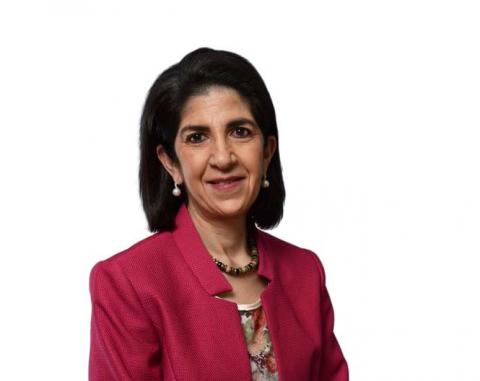The year 2016 will be very challenging but also very exciting for all of us at CERN. The LHC will be operating at close to design energy and luminosity. We’ll be preparing for CERN’s medium- and long-term future, and there will be much interesting and crucial work across the full spectrum of the laboratory’s projects and activities. As the year gets underway, I’d like to reiterate my very best wishes to you and your families for a very happy 2016.
While I may have the duty, and the honour, of being Director General for the next five years, I very much see CERN as a collaboration of equals. Each one of us has a role to play, and each one of us is as valuable to the Organization as everyone else.
In recognition of this, among the priorities for my mandate is communication with the CERN personnel. To that end, I will be addressing you not only in January, but also after the June Council meeting. Together with the Directorate, we will investigate other means and opportunities for exchanges with you. Your input, on all matters and in particular on how to improve our dialogue, is very much welcome. Today, however, I would like to address two points: the new organisational structure of CERN, and the scientific priorities for 2016-2020 as I presented them today in my first address to the personnel.
The most visible structural change is the creation of a new sector: International Relations. This recognises the vital importance of nurturing our good relations with key stakeholders: the Member States, of course, who are the backbone of our Organization, but also prospective Member and Associate Member states, and all other groups that matter to CERN. That includes you, our staff and users. It includes our neighbours. It includes students and educators, and it includes the media among many others. For this reason, we are moving the former Communications and Education groups into the new sector, along with Host State Relations, the Protocol Office, and Donor and Potential Donor Relations.
International Relations is not the only structural change. The bulk of the former GS department becomes Site Management and Buildings, with certain groups being moved elsewhere: the Medical Service and Fire Brigade, for example, to the HSE unit. In the Research and Computing sector, we have reinstated Theory as a department, recognising CERN’s mission as a centre of excellence for scientific exchange and culture, and the important role our theorists play in this respect.
The scientific priorities for the next five years fall into three categories. Firstly, it hardly needs to be said that full exploitation of the LHC through Run 2 is the highest priority. Looking further, we need to ensure that the High-Luminosity LHC project and injector upgrades remain technically on track and financially secure, for both the accelerators and the experiments.
While doing this, we must remember that CERN is much more than the LHC, and this is the second category. The experimental programme across the whole accelerator complex is diverse, exciting and vibrant. Beyond the lab, we’ll be developing our capacity to contribute to neutrino research outside Europe through the CERN neutrino platform.
The third category recognises that the long-term future of CERN begins now. It will take some time for the physics case for the post-LHC era to become clear, but the technological developments necessary for that future must move to the forefront today. We will be seeking to enhance worldwide collaboration on this front, and, through studies and projects like the FCC study, CLIC and AWAKE, keeping our options open. In this vein, we will launch a study of the future scientific opportunities offered by the CERN accelerator complex away from the high-energy frontier, for example with a future fixed-target programme.
To conclude this message, I want to end on something that encapsulates the essence of CERN: an atmosphere of mutual trust, collaboration, and continuous dialogue between the Management, personnel and Council. This has been and will be the hallmark of CERN, and the new Management team is fully committed to it. The skills and dedication of CERN’s personnel are the Organization’s strongest assets. I will be relying on your help and support, and I will do my best to help you realise your own professional aspirations as we pursue our objectives.
Once again, let me wish you and all those close to you a wonderful 2016.

